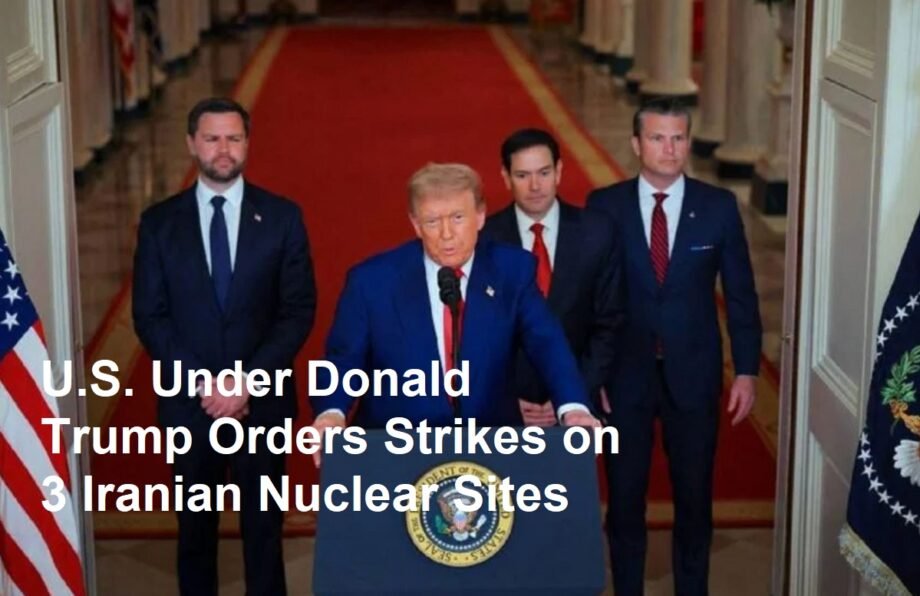Introduction
In a significant escalation of geopolitical tensions, the United States, led by former President Donald Trump’s command, has officially conducted airstrikes targeting three nuclear sites in Iran. This unprecedented military action marks a critical turning point in U.S.-Iran relations and raises widespread concerns in the international community about the possibility of intensified conflict in the Middle East.
The Bombing of Three Iranian Nuclear Sites
The U.S. military, under directives from Donald Trump, launched coordinated airstrikes on three strategic nuclear facilities in Iran. These sites are believed to be central to Iran’s nuclear program—a program that has long been a source of global contention due to fears over nuclear weapon development. While exact locations of the bombed facilities remain partially classified, intelligence sources suggest these targets were chosen to hamper Iran’s nuclear capabilities significantly.
Context and Motivations Behind the Strikes
The U.S. administration stated that the strikes were a preemptive measure designed to counter perceived imminent threats from Iran’s nuclear advancements. Tensions between the two countries had escalated following years of diplomatic failures and Iran’s continuation of nuclear activities despite international sanctions and agreements.
President Trump’s aggressive stance on Iran’s nuclear ambitions has been a cornerstone of his foreign policy. The strikes send a strong message about the U.S.’s determination to prevent Iran from acquiring nuclear weapons and demonstrating military resolve to its allies and adversaries alike.
Global Reactions and Geopolitical Implications
The bombing of Iranian nuclear sites has elicited immediate reactions worldwide. Allies of the U.S. have shown support for the measure, emphasizing the necessity of stalling nuclear proliferation in volatile regions. Conversely, Iran condemned the attacks as acts of aggression and vowed retaliation, stirring fears of regional instability and potential broader conflict.
The strikes have intensified the already delicate relationship between major world powers, with global diplomatic efforts now focused on crisis de-escalation. The United Nations and several countries have called for restraint and peaceful dialogue to prevent further escalation.
Risks and Potential for Wider Conflict
Military analysts warn that the bombings could catalyze a wider conflict in the Middle East, potentially drawing in regional and global powers. Iran’s response mechanisms could involve proxy engagements or direct military actions against U.S. interests and allies in the region.
Moreover, the strikes raise concerns over civilian safety, nuclear fallout, and the long-term consequences for international security. The situation remains fluid as intelligence continues to be monitored closely by all parties involved.
Conclusion
The U.S. strikes on three Iranian nuclear sites under Donald Trump’s command represent a pivotal moment in international relations, with far-reaching implications for peace and stability in the Middle East. While the immediate objective was to curb Iran’s nuclear capability, the triggers set by this military action may redefine regional dynamics and global diplomatic strategies in the months to come. Affected nations and world leaders will be watching closely as events unfold, underscoring the urgent need for diplomatic solutions alongside measured security precautions.









